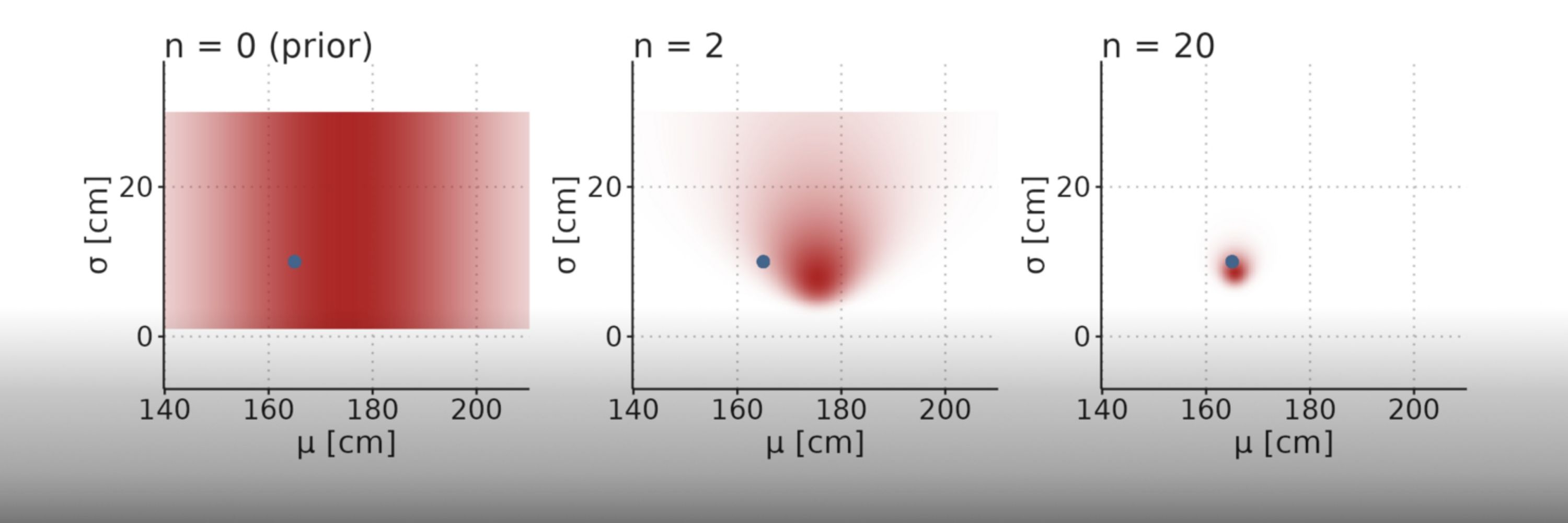
Johannes Enevoldsen
@johsenevoldsen.bsky.social
MD, PhD. Anaesthesiology trainee. Interested in health, statistics and scientific programming (R and Julia)
"If CO increases, EtCO2 rises, CO2 elimination increases, PaCO2 falls and this is also sustained."
The problem here is that if CO2 elimination increases, without a matching increase in production, dissolved CO2 will drop with a constant rate (elimination - production)
The problem here is that if CO2 elimination increases, without a matching increase in production, dissolved CO2 will drop with a constant rate (elimination - production)
October 31, 2025 at 1:23 PM
"If CO increases, EtCO2 rises, CO2 elimination increases, PaCO2 falls and this is also sustained."
The problem here is that if CO2 elimination increases, without a matching increase in production, dissolved CO2 will drop with a constant rate (elimination - production)
The problem here is that if CO2 elimination increases, without a matching increase in production, dissolved CO2 will drop with a constant rate (elimination - production)
In ROSC, there is definitely an increase in CO2 production to maintain the new EtCO2.
I dont see how an increase in EtCO2 is not directly proportional to the amount of exhaled CO2 (unless the patient suddenly gets obstructive).
I dont see how an increase in EtCO2 is not directly proportional to the amount of exhaled CO2 (unless the patient suddenly gets obstructive).
October 31, 2025 at 9:17 AM
In ROSC, there is definitely an increase in CO2 production to maintain the new EtCO2.
I dont see how an increase in EtCO2 is not directly proportional to the amount of exhaled CO2 (unless the patient suddenly gets obstructive).
I dont see how an increase in EtCO2 is not directly proportional to the amount of exhaled CO2 (unless the patient suddenly gets obstructive).
So when people use/study EtCO2 as indicator of fluid responsiveness, they look for a *temporary* increase in EtCO2? This is the model that makes sense to me, but I could not find it specified in any of the papers.
October 31, 2025 at 8:21 AM
So when people use/study EtCO2 as indicator of fluid responsiveness, they look for a *temporary* increase in EtCO2? This is the model that makes sense to me, but I could not find it specified in any of the papers.
CaCO2 refers to the average CO2 in blood (arterial + venosus), right? The arterial concentration increase with ⬆️CO.
VCO2 = Exhaled + ΔCavCO2
At steady state the dissolved part is constant, so VCO2 = exhaled CO2.
VCO2 = Exhaled + ΔCavCO2
At steady state the dissolved part is constant, so VCO2 = exhaled CO2.
October 31, 2025 at 7:14 AM
CaCO2 refers to the average CO2 in blood (arterial + venosus), right? The arterial concentration increase with ⬆️CO.
VCO2 = Exhaled + ΔCavCO2
At steady state the dissolved part is constant, so VCO2 = exhaled CO2.
VCO2 = Exhaled + ΔCavCO2
At steady state the dissolved part is constant, so VCO2 = exhaled CO2.
I see how better V/Q will get EtCO2 closer to PaCO2.
But how can we sustain a higher EtCO2, if production is constant?
Assuming a square capnography curve, EtCO2 must be directly proportional to the volume of exhaled CO2, which must equal the production of CO2 (at steady state).
But how can we sustain a higher EtCO2, if production is constant?
Assuming a square capnography curve, EtCO2 must be directly proportional to the volume of exhaled CO2, which must equal the production of CO2 (at steady state).
October 30, 2025 at 9:26 PM
I see how better V/Q will get EtCO2 closer to PaCO2.
But how can we sustain a higher EtCO2, if production is constant?
Assuming a square capnography curve, EtCO2 must be directly proportional to the volume of exhaled CO2, which must equal the production of CO2 (at steady state).
But how can we sustain a higher EtCO2, if production is constant?
Assuming a square capnography curve, EtCO2 must be directly proportional to the volume of exhaled CO2, which must equal the production of CO2 (at steady state).
I find it more acceptable if it's formulated as: You ask a person with two kids: "is at least one of your kids a boy born on a Tuesday?" They say "yes". What is the probability that they have two boys?
October 15, 2025 at 8:16 PM
I find it more acceptable if it's formulated as: You ask a person with two kids: "is at least one of your kids a boy born on a Tuesday?" They say "yes". What is the probability that they have two boys?
Ah 👌 det giver jo egentligt god mening. TIL
September 29, 2025 at 12:41 PM
Ah 👌 det giver jo egentligt god mening. TIL
Ok. Mit eksempel var grammatisk forkert ☺️ " ... med dens krig"
Men er den oprindelige overskrift ikke stadig god nok?
Men er den oprindelige overskrift ikke stadig god nok?
September 29, 2025 at 10:18 AM
Ok. Mit eksempel var grammatisk forkert ☺️ " ... med dens krig"
Men er den oprindelige overskrift ikke stadig god nok?
Men er den oprindelige overskrift ikke stadig god nok?
Er det ikke korrekt? "dansker banker" er grundled i sætningen.
Sætningen kunne forsættes "... med deres krig"
Sætningen kunne forsættes "... med deres krig"
September 29, 2025 at 10:12 AM
Er det ikke korrekt? "dansker banker" er grundled i sætningen.
Sætningen kunne forsættes "... med deres krig"
Sætningen kunne forsættes "... med deres krig"
Great ... though it would have been nice to make this show 0✅

June 18, 2025 at 1:12 PM
Great ... though it would have been nice to make this show 0✅
I have the same problem. If I only ever intend putting it on GitHub, is it reasonable to just ignore it? Escaping all these characters will make the code a lot less readable.
June 18, 2025 at 11:46 AM
I have the same problem. If I only ever intend putting it on GitHub, is it reasonable to just ignore it? Escaping all these characters will make the code a lot less readable.
Thank you. With such praise, it is hard not to:
RSS: jenevoldsen.com/index.xml
RSS: jenevoldsen.com/index.xml
jenevoldsen.com
June 17, 2025 at 11:16 AM
Thank you. With such praise, it is hard not to:
RSS: jenevoldsen.com/index.xml
RSS: jenevoldsen.com/index.xml
It would be a reasonable regulatory mechanism, that lactate signals increased oxygen demand and raises CO, though I don't know whether it is possible, or even meaningful, to distinguish whether lactate is both fuel and a signal, or just fuel.
June 13, 2025 at 9:03 PM
It would be a reasonable regulatory mechanism, that lactate signals increased oxygen demand and raises CO, though I don't know whether it is possible, or even meaningful, to distinguish whether lactate is both fuel and a signal, or just fuel.
Just found that the same group also did this study, showing that lactate increases CO in healthy adults. pubmed.ncbi.nlm.nih.gov/39825426/

Cardiovascular effects of lactate in healthy adults - PubMed
https://clinicaltrials.gov/ct2/show/NCT04710875 . Registered 1 December 2020.
pubmed.ncbi.nlm.nih.gov
June 13, 2025 at 9:03 PM
Just found that the same group also did this study, showing that lactate increases CO in healthy adults. pubmed.ncbi.nlm.nih.gov/39825426/
My cardiac arrhythmia simulation now also simulates how a reentrant loop can be terminated by increasing refractory time as suggested by @empoisonpharmd.bsky.social
Direct link to the updated part:
jenevoldsen.com/posts/excita...
Direct link to the updated part:
jenevoldsen.com/posts/excita...
June 13, 2025 at 7:34 PM
Incredible effect sizes. Do we know what lactate does in a healthy heart? From a teleological perspective, it would make sense that lactate has a positive inotropic effect, regardless of it being a substrate. Simply as a signal of hypoperfusion.
June 13, 2025 at 6:58 PM
Incredible effect sizes. Do we know what lactate does in a healthy heart? From a teleological perspective, it would make sense that lactate has a positive inotropic effect, regardless of it being a substrate. Simply as a signal of hypoperfusion.
I'm sorry you had to experience that. Unfortunately I don't know what determines which treatment is tried first, or whether e.g. cardioversion can be expected to work if the condition reoccurs, when it didn't work the first time.
May 26, 2025 at 4:17 AM
I'm sorry you had to experience that. Unfortunately I don't know what determines which treatment is tried first, or whether e.g. cardioversion can be expected to work if the condition reoccurs, when it didn't work the first time.

